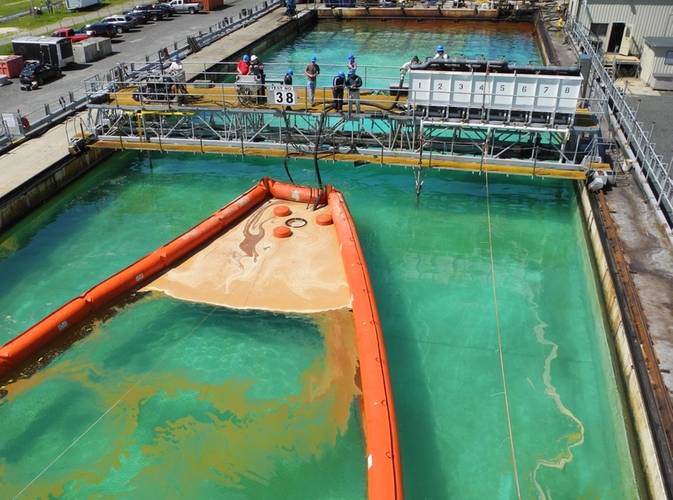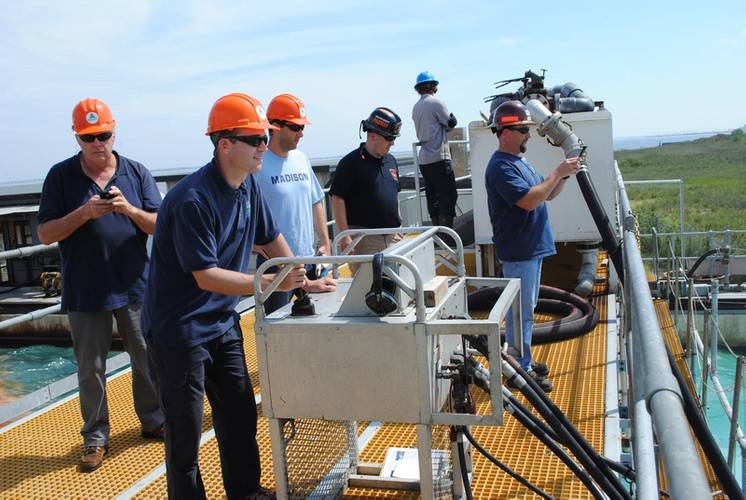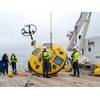The National Oil Spill Response Research & Renewable Energy Test Facility is the premier training site for spill response personnel. Training at the facility takes the learning out of the classroom and into the 2.6 million gallon wave/tow test tank. That’s where students receive hands-on exercises with the latest spill response equipment and techniques used in the field.
Over the past 20 years, in partnership with Texas A&M University National Spill Control School (NSCS),
Ohmsett has offered a hands-on oil spill response curriculum designed to provide response personnel the skills necessary to make quick and informed decisions during an oil spill incident. The next Oil Spill Response Strategies and Tactics Training session will take place May 22-25, 2017 at the Ohmsett facility in Leonardo, N.J.
“For the oil spill response technician, this is an important part of their spill response training program and a stepping stone for their career,” stated John Delia, program manager at Ohmsett. “Not only do students receive classroom theory, they participate in tank exercises with real oil.”
The Oil Spill Response Strategies and Tactics course starts out with classroom instruction providing a detailed review of oil spill fundamentals and actual implementation of proven best practices during spill response efforts. Topics include a review of the application of all types of skimmers, booming strategies, an overview of Shoreline Cleanup and Assessment Technique (SCAT), National Incident Management System (NIMS), contingency planning, and a review of the behavior of oil on water.
Following classroom instruction, attendees receive hands-on oil spill response training using the latest equipment and techniques in the Ohmsett test tank. The tank’s wave generator can create different types of waves to simulate a variety of harbor and sea conditions. There they practice recovering real oil using equipment under conditions that simulate an actual oil spill.
“The combined classroom/tank exercise training provides response teams the skills to work safely, operate more effectively, and make better decisions in the field,” says Mr. Delia. “While networking with members of the response community from around the world, participants are able to share experiences, ideas and knowledge.”

















 August 2025
August 2025



